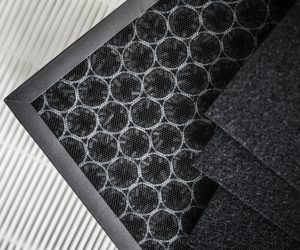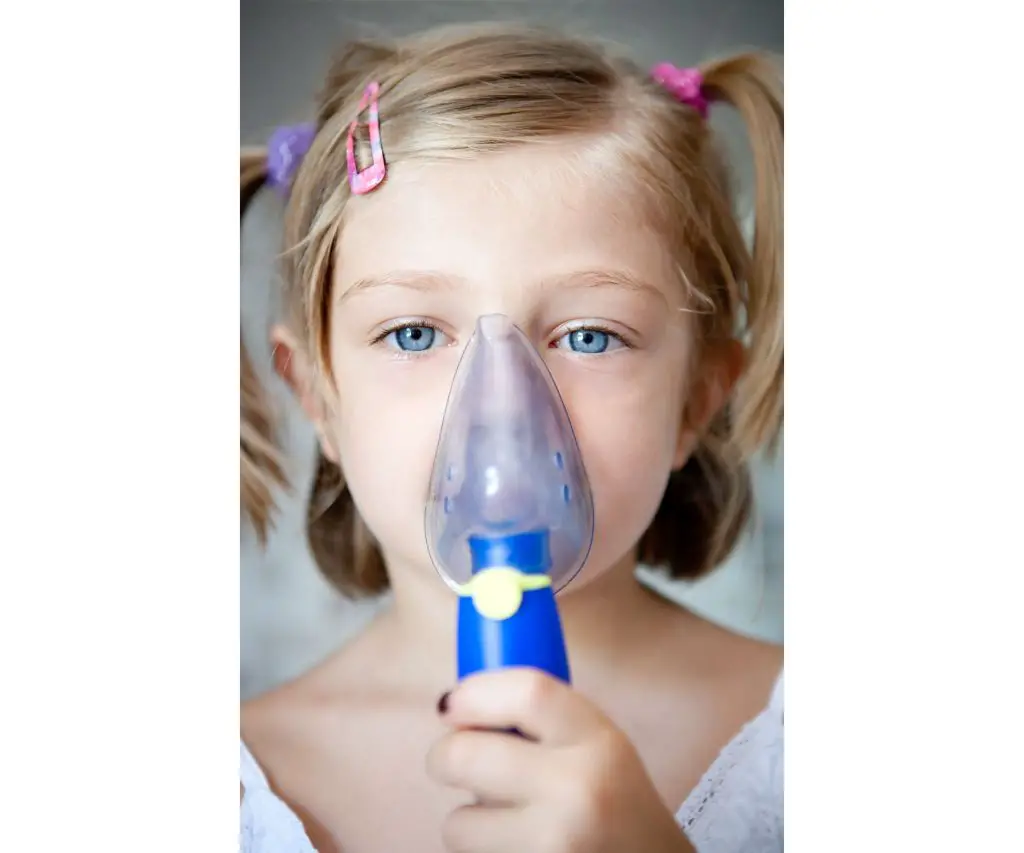 Do HEPA Filters Remove VOCs?
Do HEPA Filters Remove VOCs?
“HEPA filters excel at trapping particles like dust and allergens, but they are not effective in removing volatile organic compounds (VOCs) due to their gaseous nature. For comprehensive indoor air quality improvement, consider a multi-pronged strategy involving HEPA filtration, low-VOC product choices, specialized air purifiers, enhanced ventilation, and advanced technologies like activated carbon or photocatalytic oxidation to address both particles and VOCs.”
As an air quality specialist, I’m often asked if using a HEPA filter can effectively remove volatile organic compounds (VOCs) from indoor air.
VOCs are emitted as gases from some solids or liquids, such as furniture, paints, cleaning supplies, etc.
Exposure to high concentrations of VOCs can cause health issues like headaches, dizziness, and damage to the liver, kidneys and central nervous system.
Some common VOCs found indoors are:
- Formaldehyde
- Benzene
- Ethylene glycol
- Toluene
- Xylenes
So do HEPA filters help remove these harmful VOCs from the air you breathe every day? Let’s take a closer look at how HEPA filters work and their limitations when it comes to VOC removal.
What is a HEPA Filter?
HEPA stands for High Efficiency Particulate Air. As the name indicates, HEPA filters are designed to remove tiny particulate matter from the air.
Particles that can be captured by a HEPA filter include:
- Dust
- Pollen
- Mold spores
- Pet dander
- Smoke
- Bacteria
- Viruses
To qualify as a HEPA filter, it must satisfy these criteria:
- Remove at least 99.97% of particles that are 0.3 microns in size
- Have a tightly constructed filter material using random interlaced glass or plastic fibers
This construction allows very small particles to be trapped as air passes through the filter. Particles smaller than 0.3 microns are even more easily captured at higher rates.
HEPA Filter Effectiveness for Particles
Here’s how efficient HEPA filters are for removing various particle sizes from the air:
| Particle Size | Removal Efficiency |
|---|---|
| 0.3 microns | 99.97% |
| 0.1 microns | 99.999% |
| 0.05 microns | 99.9999% |
As you can see, HEPA filters are extremely effective at trapping microscopic particulate matter, including bacteria, viruses, smoke, and allergens. This makes them very useful for improving indoor air quality and health.
Do HEPA Filters Remove VOCs?
Now that we understand how HEPA technology works to filter out particles, let’s get back to our original question – can they remove gaseous VOCs?
Unfortunately, HEPA filters do NOT remove VOCs or other gases from the air.
The reason is simple – VOCs are not particles, they are chemical gases. The pores in the HEPA filter fiber mesh are too large to trap the smaller VOC molecules. So the VOCs simply pass through the filter unchanged.
While excellent for filtering particulate matter, HEPA filters have these limitations when it comes to VOCs:
- Do not capture or adsorb gaseous chemicals
- Allow VOCs to pass freely through filter material
- Do not breakdown or alter VOCs through chemical reactions
So using a HEPA filter alone is not effective for reducing VOCs and their associated health risks. It only addresses one part of indoor air quality issues.
Alternative Ways to Reduce VOCs
Since HEPA filters fall short for VOC removal, what other options should you consider for reducing VOC exposure?
Source Control
Limiting the amount of VOCs entering the indoor environment in the first place is ideal. Some tips:
- Choose low-VOC or zero-VOC paints, finishes, and adhesives
- Use green cleaning products without harsh chemicals
- Ensure proper ventilation when painting, refinishing floors, etc.
- Avoid purchasing furniture and goods with high VOC emissions
Local Exhaust
Use bath and kitchen fans to vent emissions directly outdoors before spreading through the home.
Air Purifiers
Specialized air purifiers with activated carbon filters can adsorb VOCs very effectively. The porous carbon has a huge surface area for trapping gaseous molecules.
Other technologies like photocatalytic oxidation (PCO) purifiers can actually break down VOCs into less harmful compounds.
Improved Ventilation
Increasing the amount of fresh outdoor air circulating indoors helps dilute VOCs and remove them from the home.
Make sure your HVAC system is running properly and bring in outdoor air as much as possible. Open windows regularly too.
The Bottom Line
While extremely useful for filtering airborne particles like dust, dander, and allergens, HEPA filters do NOT remove VOCs which are gaseous chemicals.
To reduce both particulate matter AND VOCs for better indoor air quality, utilize a multi-pronged approach:
- Use HEPA filters to remove particles
- Control VOC sources by choosing low-VOC products
- Improve ventilation and air circulation
- Use air purifiers with activated carbon or PCO technology to remove VOCs
Taking these steps together will minimize both particles and VOCs, creating the cleanest, healthiest indoor air possible. As an air quality specialist, I always recommend a complete strategy including HEPA filters plus VOC removal methods for optimal air quality and health.
 FAQ
FAQ
1. Can HEPA filters remove volatile organic compounds (VOCs)?
HEPA filters are highly efficient at capturing particles but are not designed to remove gaseous VOCs. VOCs have a different chemical nature that prevents them from being trapped by HEPA filters.
2. What particles can HEPA filters effectively capture?
HEPA filters can effectively capture particles such as dust, pollen, mold spores, pet dander, smoke, bacteria, and viruses.
3. What is the efficiency of HEPA filters for particle removal?
HEPA filters can remove particles of various sizes with remarkable efficiency, including 99.97% for 0.3 microns, 99.999% for 0.1 microns, and 99.9999% for 0.05 microns.
4. Why are HEPA filters ineffective against VOCs?
HEPA filters have pores that are too large to capture the smaller molecules of volatile organic compounds (VOCs), which are gaseous chemicals. As a result, VOCs easily pass through HEPA filters.
5. How can I reduce VOC exposure in indoor environments?
To minimize VOC exposure, opt for low-VOC or zero-VOC paints, finishes, and adhesives. Additionally, use green cleaning products, ensure proper ventilation during activities like painting, and avoid items with high VOC emissions.
6. Can air purifiers help with VOC removal?
Yes, specialized air purifiers equipped with activated carbon filters are effective at adsorbing VOCs. Other technologies like photocatalytic oxidation (PCO) purifiers can break down VOCs into less harmful compounds.
7. What’s the recommended approach for optimal indoor air quality?
For the best indoor air quality, combine strategies: utilize HEPA filters to address particles, control VOC sources by selecting low-VOC products, enhance ventilation, and employ air purifiers with activated carbon or PCO technology to target VOCs.
For more detailed information on indoor air quality and VOCs, you can refer to resources provided by the United States Environmental Protection Agency (EPA). The EPA offers authoritative guidance on air quality, VOCs, and strategies for maintaining a healthier indoor environment.


 Do HEPA Filters Remove VOCs?
Do HEPA Filters Remove VOCs? FAQ
FAQ
 Is a Window Air Conditioner a Dehumidifier?
Is a Window Air Conditioner a Dehumidifier?
 Additional Tips and Information:
Additional Tips and Information:


 In my experience,
In my experience, Humidifier vs Diffuser for Sinus
Humidifier vs Diffuser for Sinus Humidifier and Diffuser: My Favorite Uses for both
Humidifier and Diffuser: My Favorite Uses for both
 Low humidity can also have a significant impact on plants.
Low humidity can also have a significant impact on plants. In conclusion, understanding the symptoms of low humidity in humans and plants, as well as the causes and ways to treat them, is essential for maintaining a healthy and comfortable environment.
In conclusion, understanding the symptoms of low humidity in humans and plants, as well as the causes and ways to treat them, is essential for maintaining a healthy and comfortable environment.
 Gather Necessary Supplies
Gather Necessary Supplies In conclusion, cleaning mold in an air conditioner is an important step in maintaining a healthy living environment.
In conclusion, cleaning mold in an air conditioner is an important step in maintaining a healthy living environment.
 When to Use the Window AC Reset Button:
When to Use the Window AC Reset Button: Conclusion:
Conclusion:
 Here are a few tips on how to care for indoor plants that clean the air:
Here are a few tips on how to care for indoor plants that clean the air:

 Window AC Sizing Chart
Window AC Sizing Chart Conclusion: What Size Window Air Conditioner Do I Need
Conclusion: What Size Window Air Conditioner Do I Need
 How to Fix Window Air Conditioner Noise
How to Fix Window Air Conditioner Noise